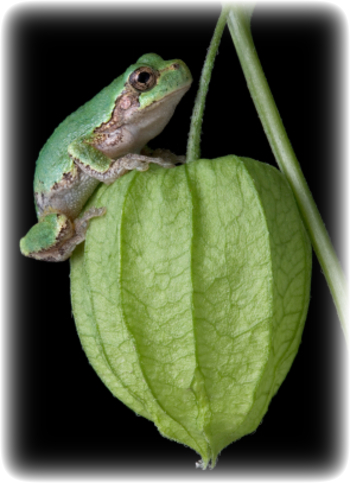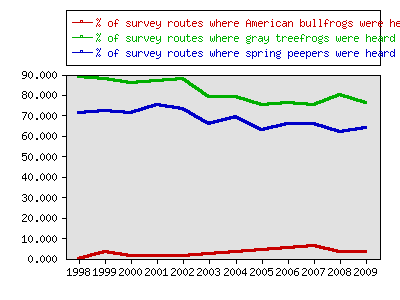Indicator 57: Frogs


Goal: Minnesotans will restore and maintain healthy ecosystems that support diverse plants and wildlife.
Rationale: Frogs, like other amphibians, are believed to be highly sensitive to changes in the environment. With a life cycle that exposes them to aquatic habitats as tadpoles and terrestrial habitats as adults and a semi-permeable skin that makes them sensitive to environmental contaminants, frogs and toads are good indicators of ecosystem health.
About this indicator: No trend was detected for 11 of Minnesota’s 14 species of frogs and toads, and therefore populations of these species appear stable. Though data must be interpreted with caution, they hint at gradual declines in two major Minnesota frog species: gray treefrogs and spring peepers.
Bullfrog populations appear to be moving beyond their traditional range in southeastern Minnesota.

Things to think about: The DNR does not consider the data a conclusive indicator of population changes. For example, weather affects the results of the survey. Fewer frogs will be heard if spring weather is unusually chilly or snowy.
Technical notes: Data is collected in the Minnesota Frog and Toad Calling Survey. The survey is conducted by volunteers who are trained to recognize frog calls. The volunteers then drive a prescribed route and stop at fixed locations to listen for the calls.
Because the survey is done by volunteers, the number of routes surveyed varies from year to year. Although the volunteers are trained, some may be more accurate than others in their identification of frog calls. The survey is conducted at the side of the road and does not attempt to find frogs in more remote habitats.
Sources:
- Minnesota Department of Natural Resources, Minnesota Frog and Toad Calling Survey, http://www.dnr.state.mn.us/volunteering/frogtoad_survey/index.html
Local data:




